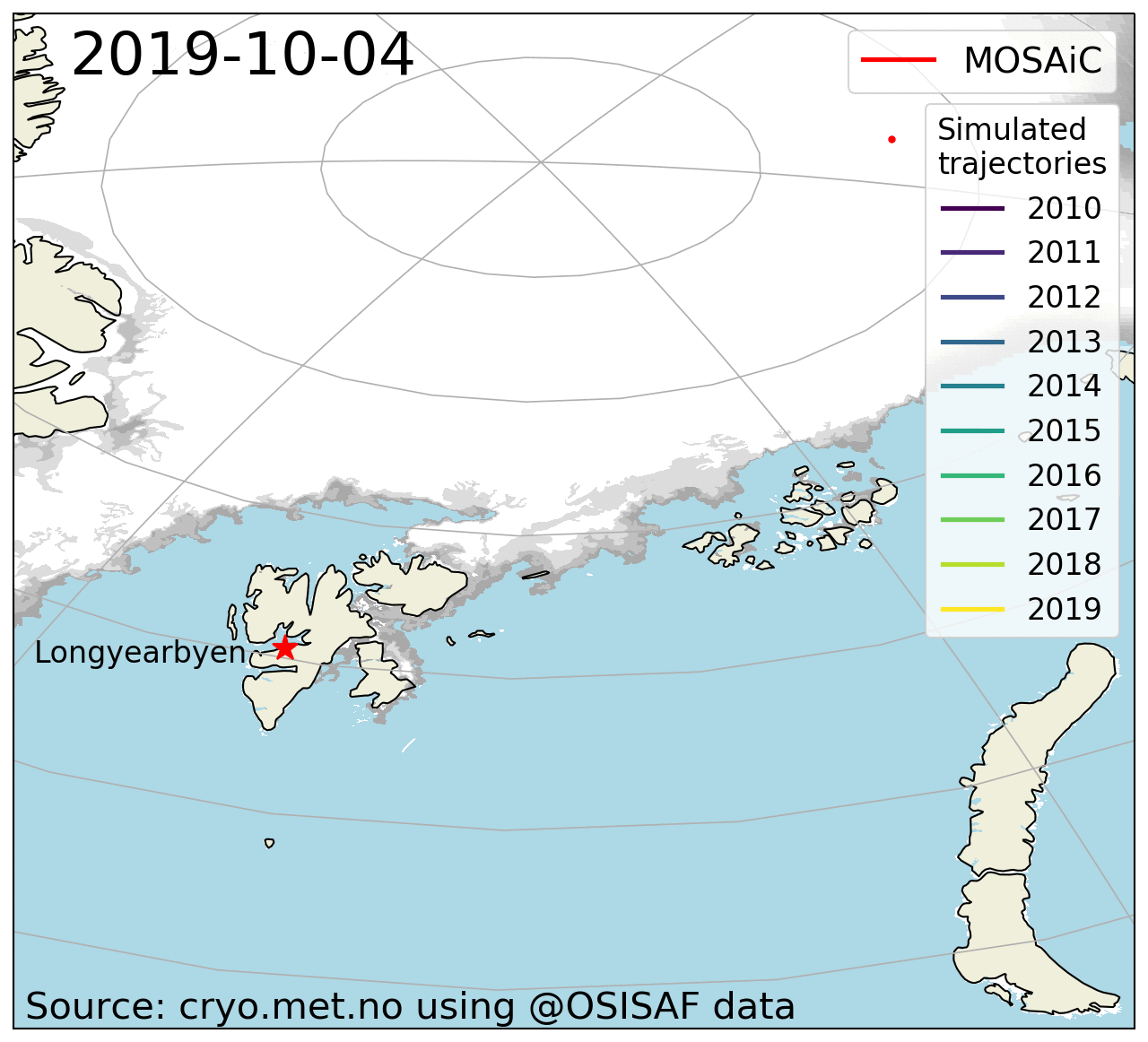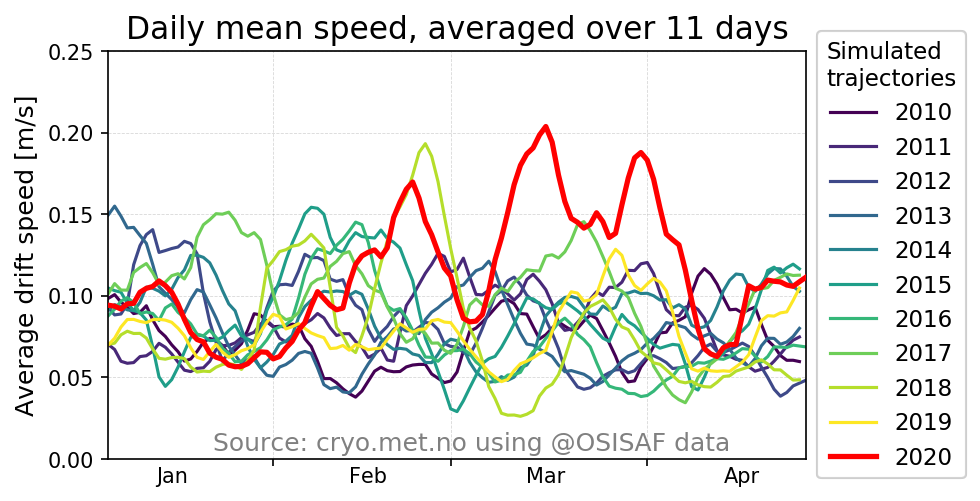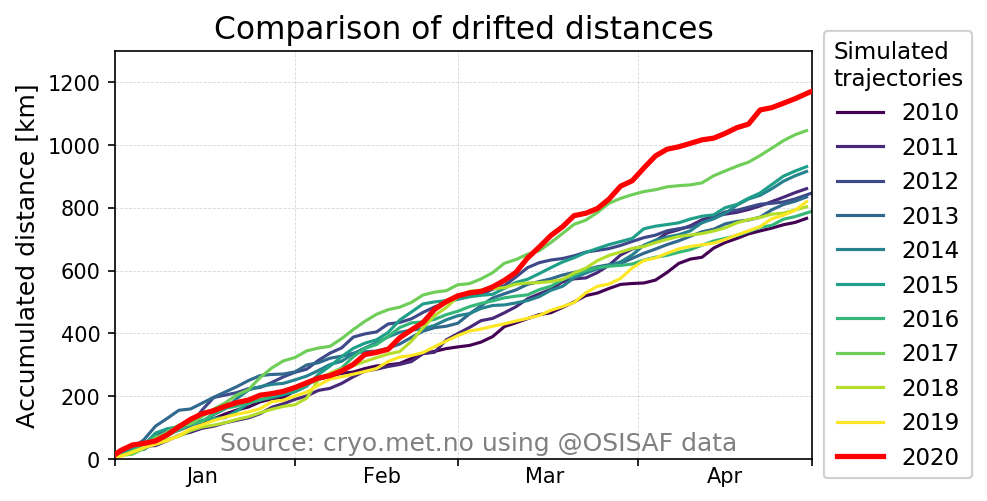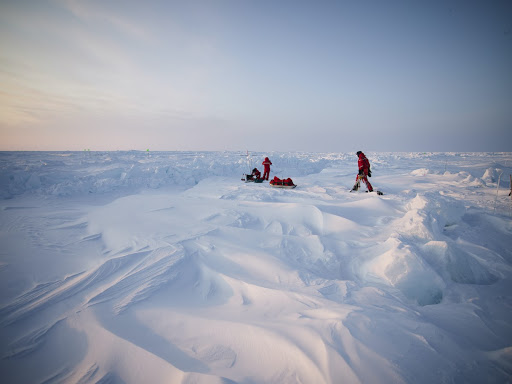Following in the footsteps of Nansen and his Fram expedition more than one hundred years ago, the research vessel Polarstern has been frozen into the ice since October, and drifts in the Arctic Ocean towards Svalbard and the Fram Strait. This international expedition is called MOSAiC (https://mosaic-expedition.org/). In 1893-1896 it took Nansen’s ship nearly three years to drift across the Arctic Ocean. For MOSAiC the journey has been less than a year.

Since January, Polarstern has drifted much faster than the ice drifted in the previous ten years. In the same four month period (Jan-April) in 1896, Fram drifted only about half the distance. This is likely a result of a weaker ice pack. The ice in the Arctic Ocean has become significantly thinner, but also much younger, than only a few decades ago. This means that it can be more easily moved around by winds and ocean currents.
The animation shows the trajectory of the MOSAiC drift campaign (red) from its beginning in October 2019 and 10 simulated trajectories (other colors) from recent years. The drift of Nansen’s Fram from January to April 1896 is also shown. The simulated trajectories are initiated at the position of MOSAiC on January 1st, and continued until May 1st. They are based on the EUMETSAT OSI SAF sea-ice drift product (OSI-405).
The two plots below show the daily averaged speed, and accumulated distance for the simulated trajectories of MOSAiC since January 2020. On those graphs, we see that the 2020 drift trajectory often is faster than the trajectories for the other years from mid March to early April. In this period, the average drift speed was several times larger than 15 cm/s (0.5 km/h) which is not common in other years.


The strong ice drift has not been constant the entire winter 2019/2020. In early winter the ice drift in the same region was anomaly weaker, something that became a challenge for the two polar explorers, Børge Ousland and Mike Horn, on their expedition to cross the Arctic Ocean via the North Pole on skis (read previous post on cryo.met.no here).
The MOSAiC expedition
The goal of the MOSAiC expedition is to bring the modern research icebreaker Polarstern close to the north pole and study the changes that have occurred in the Arctic. Just like Nansen's expedition with his ship Fram in 1893 - 1896, Polarstern has been frozen into the sea-ice and is drifting with the ice across the Arctic Ocean. Polarstern hosts scientists that conduct research within 5 main areas: atmosphere, ocean, sea-ice, ecosystem, and biogeochemistry. Observational sites are set up on the ice. Hundreds of researchers from 20 countries, including Norway, are involved. The data gathered will be used for climate research by scientists around the globe. The expedition is led by the Alfred Wegener Institute, Helmholtz Centre for Polar and Marine Research (AWI). The expedition has actually been visible from space.

Open data on sea-ice drift
At the Norwegian Meteorological Institute, we continuously monitor the Arctic Ocean with the help of satellites that orbit around the Earth. Every single day, we prepare maps and information products that describe the Arctic sea-ice environment. For example, we prepare information about where the sea-ice edge is, about how compact the ice is, and how fast it moves (aka sea-ice drift). The data is free and open, and you too can see and access it. You can spool in our archive, read more about how we prepare the data, and download it for your own use.
This news story was created in collaboration with @oceanseaicenpi.

